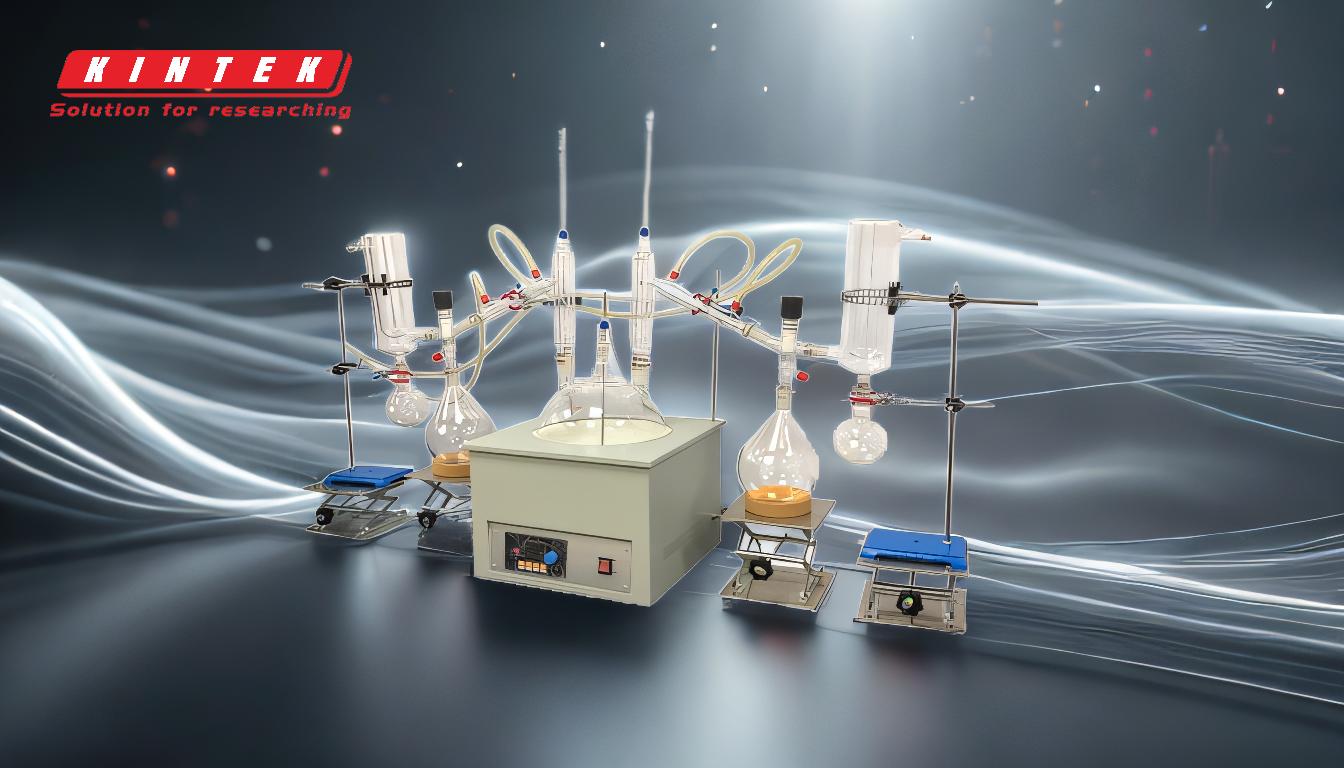Short path distillation, while efficient for separating heat-sensitive compounds, has several notable disadvantages. These include high equipment costs due to the need for precise vacuum sealing and specialized materials, the requirement for skilled operators, and limitations in scaling up for large-scale production. Additionally, the process can lead to the loss of volatile solvents due to the short distance between evaporation and condensation surfaces, and achieving precise fractionation can be challenging due to overlapping boiling points and eutectic mixtures. These factors collectively limit its market growth and practicality for certain applications.
Key Points Explained:

-
High Equipment Costs:
- Short path distillation equipment is significantly more expensive than traditional distillation setups. This is primarily due to the need for high sealing performance to maintain the necessary vacuum conditions.
- The precision required in constructing the equipment, such as controlling the distance between the evaporating and condensing surfaces, adds to the complexity and cost.
- While the initial investment is high, the potential for reduced waste and higher purity products can offer long-term savings.
-
High Skill Requirements for Operators:
- Operating short path distillation systems requires a high level of expertise. Operators must be skilled in maintaining vacuum conditions, controlling temperature gradients, and ensuring the system's integrity.
- The complexity of the process demands experienced personnel, which can increase labor costs and limit the accessibility of the technology for smaller operations.
-
Loss of Volatile Solvents:
- The short distance between the evaporation flask and the receiving flask can lead to the loss of extracted gas solvents. These solvents may remain in the system, reducing the overall efficiency of the distillation process.
- This limitation can be particularly problematic when working with volatile compounds, as it can affect the yield and purity of the final product.
-
Difficulty in Achieving Precise Fractionation:
- Short path distillation struggles with achieving precise fractionation due to the overlap of boiling points and the formation of eutectic mixtures. This makes it challenging to separate compounds with similar boiling points.
- The process may require multiple distillation cycles or additional purification steps, which can increase both time and cost.
-
Limitations in Scale and Production:
- Short path distillation is not well-suited for large-scale operations. The equipment is typically designed for smaller batches, which limits its applicability in industries requiring high-volume production.
- Scaling up the process can be technically challenging and economically unfeasible, making it less attractive for large-scale industrial applications.
-
Market Growth Constraints:
- The combination of high costs, technical complexity, and limited scalability restricts the market growth of short path distillation. These factors make it less competitive compared to other distillation methods, particularly in industries where cost-efficiency and large-scale production are critical.
In summary, while short path distillation offers advantages in terms of efficiency and the ability to handle heat-sensitive materials, its disadvantages—such as high costs, technical complexity, and scalability issues—pose significant challenges. These limitations must be carefully considered when deciding whether to implement this technology in a given application.
Summary Table:
| Disadvantage | Key Details |
|---|---|
| High Equipment Costs | Expensive due to precise vacuum sealing and specialized materials. |
| High Skill Requirements | Requires skilled operators for vacuum and temperature control. |
| Loss of Volatile Solvents | Short distance causes solvent loss, reducing efficiency. |
| Difficulty in Precise Fractionation | Overlapping boiling points and eutectic mixtures complicate separation. |
| Limitations in Scale and Production | Not suitable for large-scale operations due to batch size constraints. |
| Market Growth Constraints | High costs and technical complexity limit market adoption. |
Need help deciding if short path distillation is right for your application? Contact our experts today for tailored advice!










